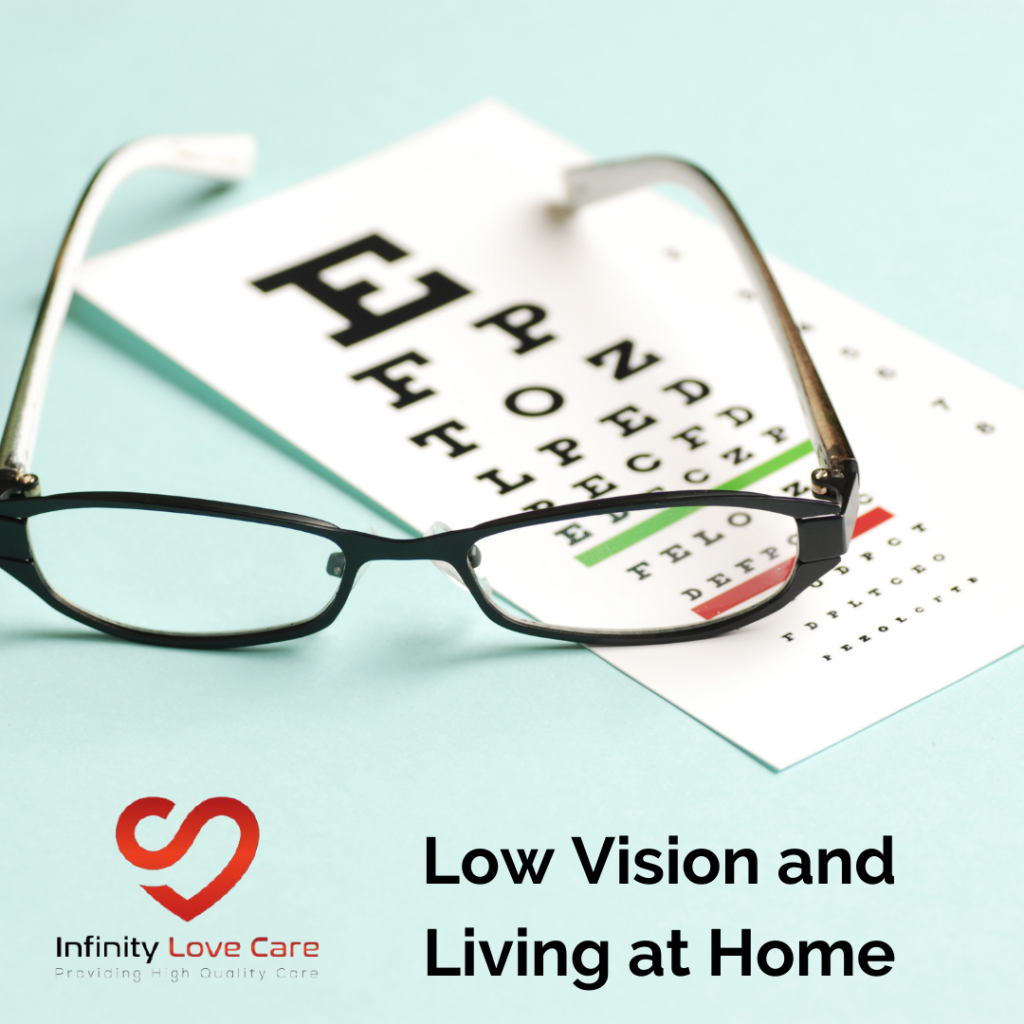May was Healthy Vision Month and the perfect time to talk more about the prevalence of low vision in older adults. The American Foundation for the Blind reports that the risk of severe eye problems increases significantly with age. Those over the age of 65 are much more likely to experience conditions that cause low vision or legal blindness than their peers.
If your senior loved one has vision loss and is struggling at home, they aren’t alone. Approximately 6.1 million Americans over the age of 65 have some type of vision loss. Most troubling is that those living with vision loss did not grow up with it and are attempting to navigate their homes and the world with vision impairment that occurred over the past few years.
Low Vision Challenges at Home

People with low vision can certainly live at home alone and thrive. However, there are some challenges. For example, low vision can increase the risk of falling. People with low vision can also experience challenges with food preparation, which can quickly lead to poor nutrition. Finally, people with low vision can struggle with getting out and about to meet friends as often, leading to isolation and feelings of loneliness.
Making It Work
If your loved one has low vision, safety is the number one concern. Here are a few adjustments you can make to their home in order to ensure their safety:
- Remove clutter. Ensure that the main pathways through your loved one’s home are clear and easy to navigate.
- Enhance lighting. If your loved one is living with low vision, they can benefit from having more lighting throughout the home. Add extra light sources to stairways, the bathroom, and halls.
- Use contrasting colors. For those with vision challenges, noticing the difference between surfaces can be difficult. Make it easier to navigate stairs and floor transitions (carpet to hardwood, for example), by using bright tape. It might not be trendy, but it will keep your loved one safe.
To make preparing and eating meals easier, try any of these tips:
- Prepare individual portions of meals in advance and put them in the fridge or freezer. This way, your loved one can easily grab one container and put it in the microwave for a home cooked and nutritious meal.
- Consider signing up your loved one for your community’s Meals on Wheels program. This way, they receive a meal delivered to their door throughout the week.
- Contact the team at Lovebird HomeCare to set up meal preparation services. Our caregivers love to nourish clients with delicious meals.
Finally, socialization decreases for most people who have low vision and who live at home alone. Decrease isolation and feelings of loneliness by:
- Scheduling transportation to/from church fellowship groups, activities at the senior center, and other events your loved one enjoys.
- Contact the team at Lovebird HomeCare; not only do our caregivers provide transportation to activities or events, but we also specialize in providing companionship. We love to get to know those we serve, sharing meals together, taking a walk around the neighborhood, and reminiscing about the past. This consistent connection decreases the risk of health problems that can come with isolation and feelings of loneliness.
Vision difficulties make it more challenging to thrive at home, but it doesn’t make it impossible. With the right resources and supports in place, your loved one can live independently at home.





